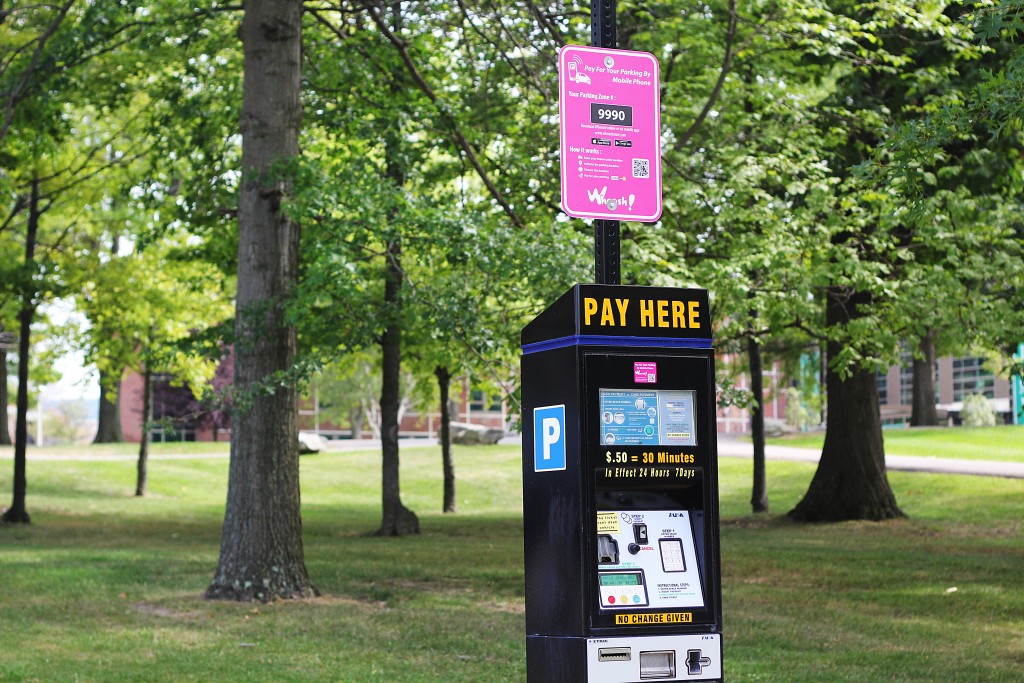
Binghamton University’s parking services plans to simplify on-campus parking by rolling out new parking lot designations and payment methods.
According to Susan Crane, the director of parking services, lots will be color coordinated. Lots for residents are now designated in yellow and lots for commuters are marked with green. All residential lots will have a letter ‘R,’ both on the sign and painted on the pavement at the entrance. Since residential students most often park on campus overnight, these yellow residential lots are open 24 hours a day and seven days a week.
However, anyone with a parking pass may use these lots and commuters who plan to be on campus overnight should be sure to park in them.
“We’re trying to make it simpler for all,” Crane said. “It’s either a green lot or a yellow lot.”
The green commuter parking lots are for all non-residents, including off-campus students, faculty and staff. Residents are not permitted to park in these lots. The green commuter parking lots must be evacuated every night from midnight until 5 a.m.
According to Crane, parking services has added Lot G and J1 to the overnight list while changing Lot T to commuter. The changes come down to a matter of trying to make parking regulations easier to follow.
“In the past if you were in a snow lot you had to move, so what we tried to do is make it all or nothing,” Crane said. “Hopefully this is going to be easier to figure out where they can park and where they can’t.”
Another change in on-campus parking is the way students, staff and faculty pay for parking. Taking metered parking into the digital age, parking services has decided to employ an app that will allow drivers to add money to meters using their smartphone.
The app, entitled Whoosh!, can be downloaded on the app store and allows users parked in metered spots to receive notifications when their time is going to run out. The app was created by Parkeon, a company that specializes in parking and transit payment methods, and will have a fee of 35 cents for each transaction made through it.
“There’s always changes in the parking world,” Crane said. “We’re constantly looking at different technologies and seeing what we can do to make parking simpler.”
Kristina Klimek, a senior majoring in environmental studies, said that she is unsure that the changes will alleviate the perceived lack of prime parking spots on campus.
“I had a car but didn’t drive to campus last year because of parking on campus,” Klimek said. “I think this will simplify the lots and parking process, but I don’t know if it will make finding parking places any easier.”
According to Matt Dolley, a junior majoring in English, the color-coded lots are just a band-aid on a much larger problem.
“Really they’re stuck making the best of a bad situation because, geographically, campus just isn’t in the right area to accommodate much development,” he said. “There’s no more room for lots.”


